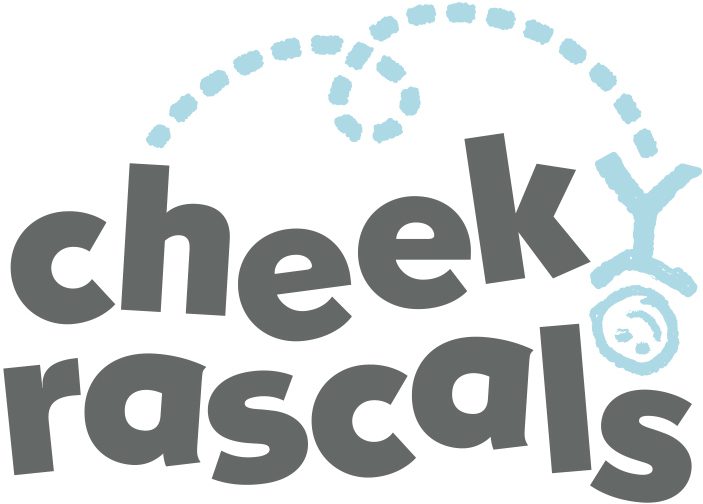Most parents and carers know that small things can be a choking hazard if swallowed, but very few know for sure what to look out for.

These photos might help. The mum’s hands are average size, and I suspect you know the bricks. What she is using is a Choke Tester – the small parts cylinder specified in the European Safety Standard. Anything that fits or can be squashed inside one of these is considered a choking hazard.
But sadly it’s not that easy. Some things may not fit into a Choke Tester, but due to their shape are still a hazard. Hot dogs are one of the most common cases of choking in the US due to their long slippery surface, while some Corner Protectors are a perfect fit into a child’s mouth if they fall off the edge of the table (which is why the Fred Corner Protectors are a completely different choke-proof design).
What can you do?
1. Keep small objects out of reach.
Many of the things that you often find lying around – coins (even the big £2 one), buttons and beads, drawing pins and screws, lithium batteries and pen tops, deflated or bits of burst balloons, marbles and other small toys – are all choking hazards.
You’ll doubtless be focussing on keeping your child’s cot/playpen a safe place, but as your child starts to crawl and explore they will spot things on the floor that may have rolled just out of sight. So stage 1 of baby proofing your home will be to check under every cupboard sofa, bed etc. in every room that your child has access to. Then each time you drop something you’ll need to pick it up straight away – and keep on checking! Even before your child starts crawling check the sofa – it’s so easy for coins, buttons, sweets etc. to fall out of a pocket and a baby to find it while cuddling on the couch.

2. Educate older children, siblings and carers
This is where having your own Choke Tester will really help – if you don’t really know the size of a choke hazard, how can you explain ‘small’ to anyone else? By showing an older child which of their toys will and won’t fit in the Choke Tester, they can work out for themselves what to keep away from the new baby. Helping the whole family to ‘think safe’ in a fun way is a great way of avoiding accidents.
You will find a Choke Tester in the Fred Safety Check Tools Kit which also includes a finger probe (to help understand what is and isn’t a finger-trap), and warning stickers to place in potentially dangerous areas of your home.
3. Don’t give children under 4 small, round food items.
Just because it’s food, it doesn’t mean it’s safe to eat. Until they are 4, children don’t have the ability to chew and manipulate foods as an adult can, so chop food to approx. 1cm pieces, and keep them away from;
• Nuts, including peanuts
• Hard raw vegetables such as carrot sticks
• Whole grapes and other round berries and vegetables. Babies often love grapes, blueberries, tomatoes etc. so simply cut them into quarters
• Sticky foods such as raisins or peanut butter that can clump together in their mouth
• Boiled or other hard sweets
• Soft sweets such as marshmallows
• Whole hot dogs and sausages. Cut them lengthways first then slice nice and small
• Chocolate eggs with toys inside (these are designed for older children)

4. Choose well-made toys from a responsible manufacturer that have the CE mark and are the appropriate age range
If a toy has small parts which are a choking hazard, they will be marked with this symbol and kept well away from the under 3’s. As any toy becomes loved and well used, you’ll need to check it regularly for damage – something may come loose and represent a risk.

5. Don’t let your children run around with objects in their mouths, and that includes food!
It’s far too easy to choke on something (or break those lovely new teeth) running around in the usual rough and tumble toddler fashion. Keeping them sitting while they eat has a double benefit – far less mess to clear up!!
6. Don’t let your child eat or drink lying down
You’ll know yourself that it is difficult to eat or drink lying down, so don’t expect your child to! Toddlers having a night-time drink in bed, should be made to sit up, and babies should never be left with a bottle.
7. Keep watching
Choking happens very quickly, so as with everything else, it is important that your child is properly supervised at all times. Avoid giving your child anything to eat or drink in the car as by the time you have stopped safely and got them out of their car seat it may be too late.
8. Be Prepared
Follow this link to the Red Cross site for their advice in case of emergency. If your child chokes, you won’t have time for a Google search, so please read this NOW.
A child dies every month in the UK from choking, and hundreds more require hospital treatment (RoSPA accident statistics). By understanding how small is ‘small’, and child proofing your home, we hope that this shockingly high accident rate can be reduced.

